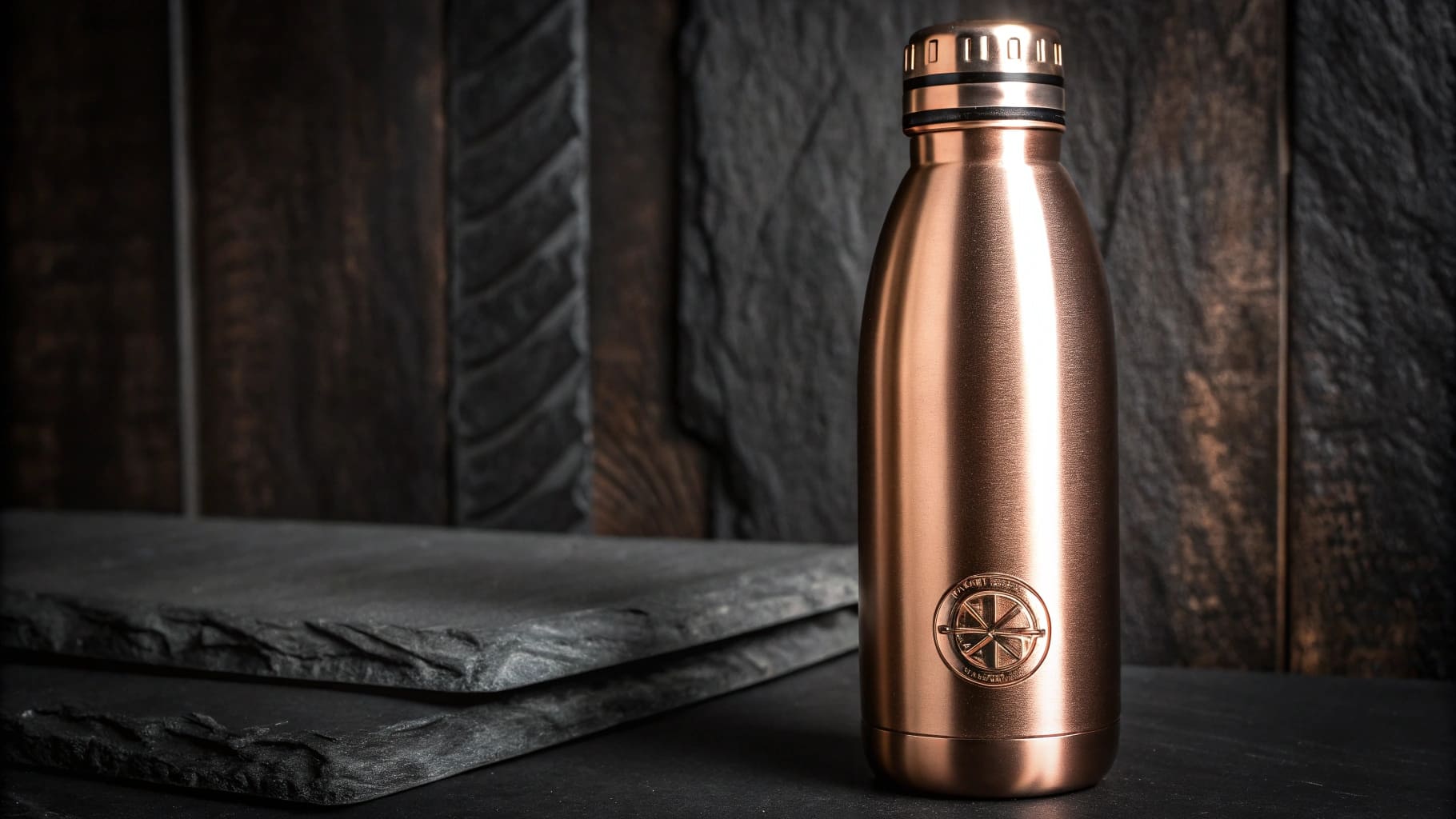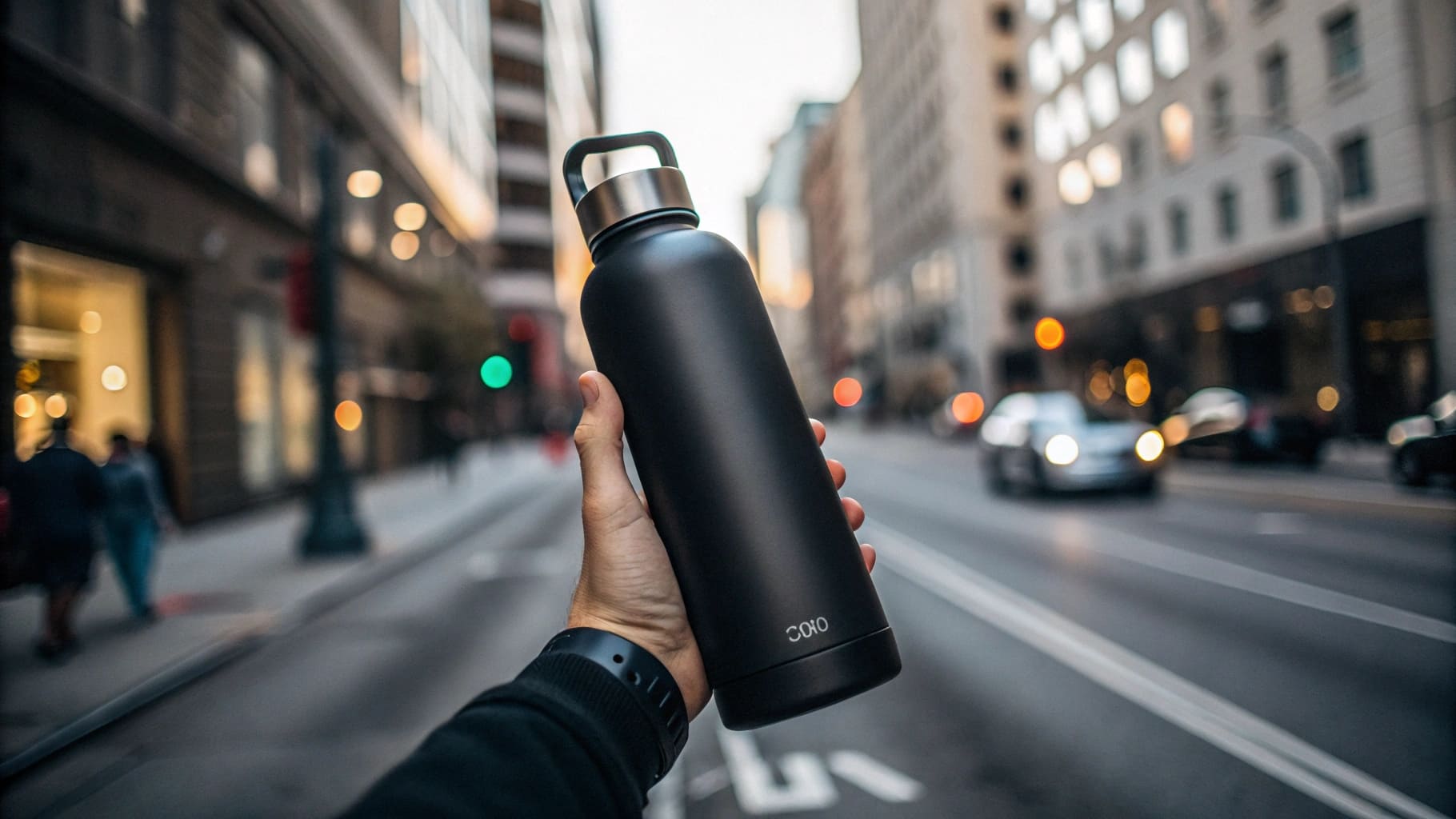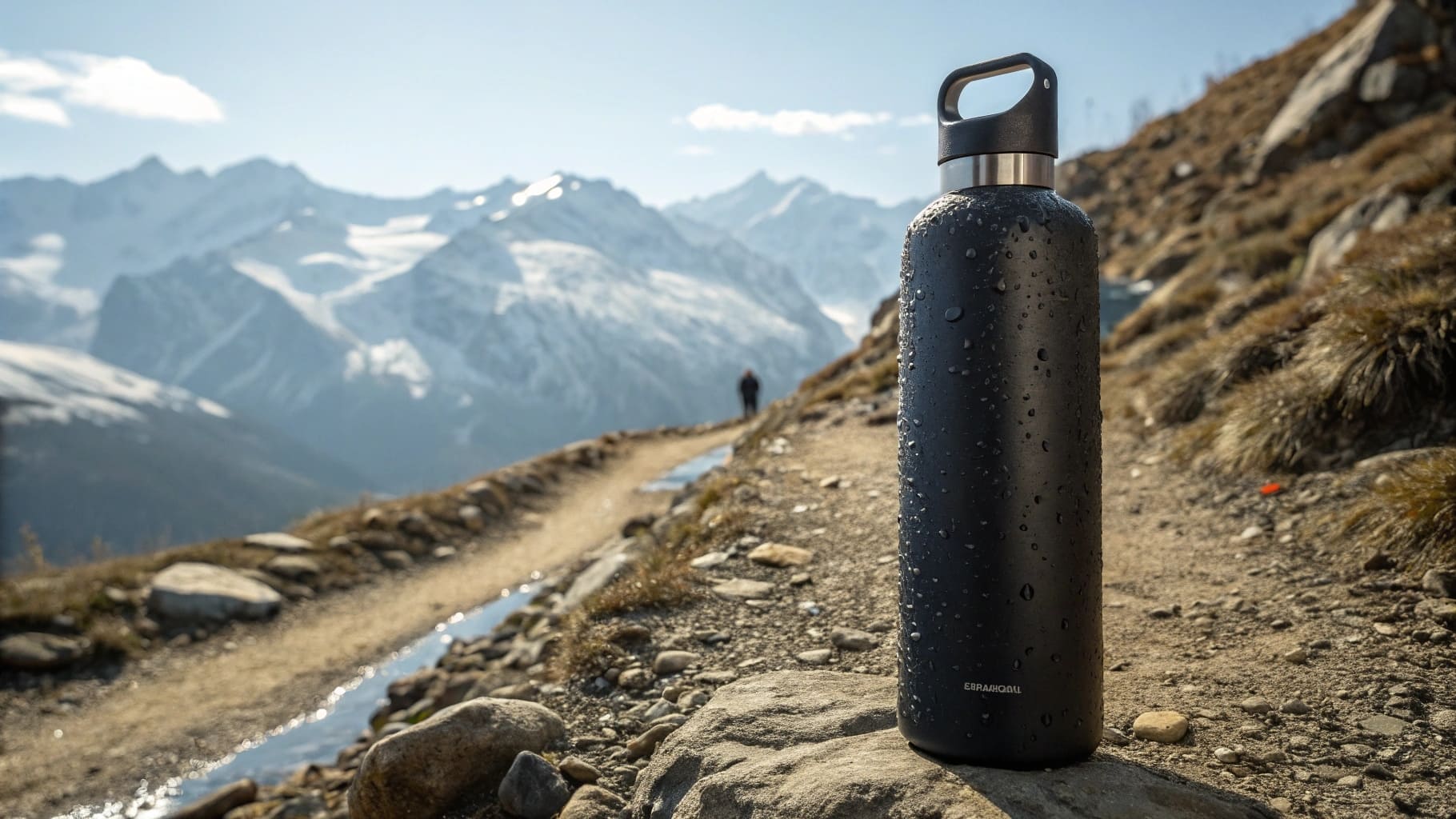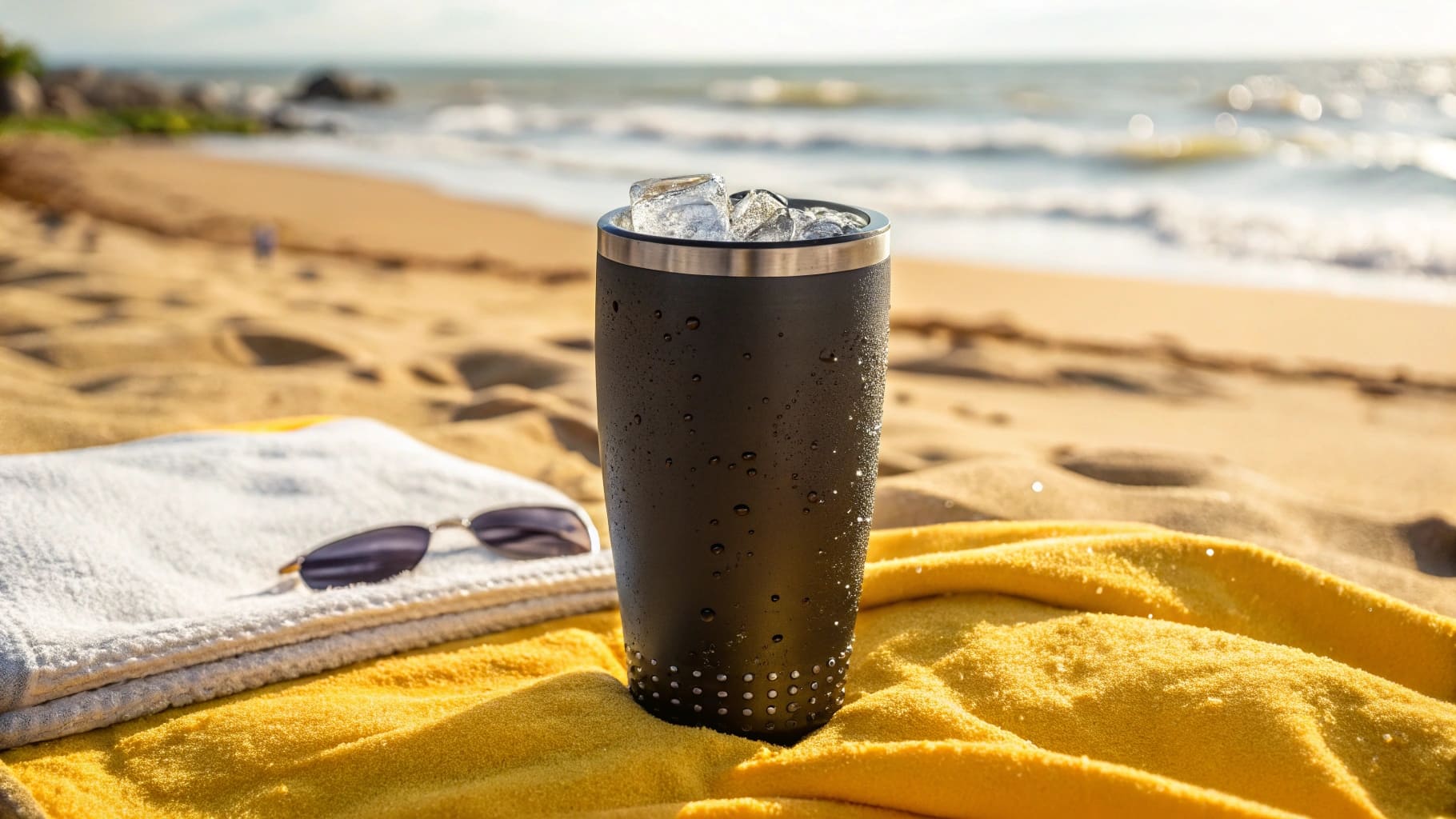Your customers want a flask that lasts, but cheap ones fail quickly. This hurts your pocket and their trust. Discover my secrets to making truly durable vacuum flasks.
The key considerations for durable vacuum flasks are careful material selection, like 304 stainless steel. Robust construction of the double walls is vital. Ensuring a perfect vacuum seal is also critical. And a well-designed, leak-proof lid completes the package. These elements together create a long-lasting product.

Now that we have a general idea, you might be thinking about what really sets a quality flask apart. It's more than just the basics. It's about the small details and the thought that goes into every single component. As a manufacturer, I've learned these lessons over many years. Let's explore what makes each part of a vacuum flask so important for its durability and performance. We'll look at the lid, the body, and the science that makes it all work.
What is the main reason for making the cover of a vacuum flask?
Do spills often ruin your day or damage items in your bag? A loose lid means frustrating leaks and your drink losing its temperature quickly. Understand why a flask's cover is so vital for top performance and user satisfaction.
The main reason for a vacuum flask's cover is to create a secure seal. This is very important to prevent leaks and spills. A good cover also helps maintain the beverage's temperature by minimizing heat exchange with the outside air.

When we design a vacuum flask at Icobottle, the lid gets a lot of attention. It's not just a simple cap. It's a critical component for performance and user experience.
Sealing: The First Priority
The primary job of the lid is to seal the flask tightly. This prevents any liquid from escaping. Imagine your customer, Mark, a busy company owner, rushing to a meeting. A leaky flask in his briefcase is the last thing he needs. We use high-quality, food-grade silicone gaskets to create this seal. The design of the threads on the lid and the flask opening must be precise. Even a tiny imperfection can lead to leaks. We test our lids rigorously to ensure they are completely leak-proof.
Thermal Performance Contribution
A lid also plays a big role in keeping drinks hot or cold. Heat can escape or enter through the lid if it's not designed well. Some lids even have their own insulation. The material of the lid, usually high-quality PP (polypropylene), and its construction affect how much heat is lost. For someone like Mark, who wants his coffee hot for hours, this matters a lot.
User Convenience and Features
Lids also add to how easy the flask is to use. We design different types of lids for different needs. Some have simple screw-on tops. Others have spouts, built-in straws, or press-to-pour mechanisms. Each design has its own challenges for durability and sealing. For example, a push-button lid needs a reliable spring and seal mechanism that can withstand thousands of uses. We always think about how the customer will use the flask. I remember we once got feedback about a lid that was hard to clean. We redesigned it to have fewer complex parts, making it more user-friendly. This kind of detail ensures the customer has a good experience.
What is the importance of parts of a vacuum flask?
Do you think all parts of a vacuum flask are made the same? Using inferior parts leads to quick wear, rust, or even breakage. Learn how each specific component contributes to the flask's overall quality and long life.
Each part of a vacuum flask is very important for its function and how long it lasts. The body holds the drink. The vacuum layer insulates it. The lid seals it. Using quality materials for all these parts ensures the flask will serve well for a long time.

A vacuum flask is more than just a container; it's a system where every part must work perfectly with the others. As a manufacturer, I focus on the quality of each component because the final product is only as strong as its weakest link.
The Main Body: Core Strength and Safety
The main body usually has two walls. This is the heart of the flask. We use premium 304-grade stainless steel1 for both the inner and outer walls. This type of steel is also known as 18/8 stainless steel because it contains 18% chromium and 8% nickel. It's food-grade, so it's safe for drinks. It's also rust-proof and very robust, meaning it can withstand some bumps and drops. The choice of steel thickness is also important. Thicker steel means more durability, but also more weight and cost. We try to find the right balance.
The Base: Stability and Protection
The bottom of the flask might seem like a small detail. But it's important for stability. Many of our flasks have an anti-slip bottom. This is often a silicone pad. It prevents the flask from sliding on smooth surfaces and can also protect the base from scratches and dents. This adds to the flask's longevity.
Accessories and Finishes: Enhancing Durability and Appeal
Other parts like handles, outer coatings, or carrying straps also matter. Handles must be securely attached. The coating on the outside of the flask, whether it's paint or a powder coat, needs to be durable. It should resist chipping and scratching. For our B2B clients like Mark, who rebrand products, the finish quality is crucial for their brand image. We also use high-quality PP or Tritan for plastic parts and food-grade silicone2 for seals. These materials must be BPA-free and durable.
Here's a quick look at some key parts:
| Part | Material Example | Key Function | Durability Factor |
|---|---|---|---|
| Inner Wall | 304 Stainless Steel | Holds beverage, maintains purity | Resists corrosion, no flavor transfer |
| Outer Wall | 304 Stainless Steel | Protects vacuum, provides structure | Impact resistance, structural integrity |
| Lid | Food-grade PP/Steel | Seals flask, drinking interface | Thread quality, material strength, seal fit |
| Seal/Gasket | Food-grade Silicone | Prevents leaks, maintains vacuum aid | Flexibility, wear-resistance, temperature tol |
| Base Pad | Silicone/Rubber | Prevents slipping, adds protection | Abrasion resistance, secure attachment |
I recall a time when we tried a new type of powder coating. It looked great, but early user feedback showed it scratched too easily. We had to switch back to our trusted, more resilient coating. This taught us that short-term savings can lead to long-term problems if quality is compromised. Every part truly matters.
What is the working principle of a vacuum flask?
Do you ever wonder how your flask keeps drinks hot or cold for so many hours? Without the science behind it, your coffee would be cold very quickly. Let's understand the simple yet very effective principle behind vacuum insulation.
A vacuum flask works using vacuum insulation. It has two walls, and the air between these walls is pumped out. This creates a vacuum. This vacuum layer greatly reduces heat transfer3 by conduction and convection, keeping drinks hot or cold.

The magic of a vacuum flask lies in something we can't even see: the vacuum. Understanding this principle is key to manufacturing high-performance flasks. As someone who oversees production, I find the science quite fascinating.
Understanding Heat Transfer
There are three main ways heat can move:
- Conduction: Heat transfer through direct contact. If you touch a hot pan, heat conducts to your hand.
- Convection: Heat transfer through the movement of fluids (liquids or gases). Hot air rising is an example.
- Radiation: Heat transfer through electromagnetic waves. The sun warming your face is an example.
A vacuum flask is designed to minimize all three.
The Role of the Vacuum
The flask has a double-walled construction4. In our factory, we use specialized machines to pump almost all the air out from the space between these two walls. This creates a near-vacuum.
- Stopping Conduction and Convection: Since conduction and convection need matter (like air molecules) to transfer heat, the vacuum acts as an excellent barrier. With very few air molecules in the space, there's little to conduct or convect heat between the inner wall (holding your drink) and the outer wall (exposed to the environment). This is why the outside of a good flask doesn't feel hot even if it's full of boiling water.
Tackling Radiation
Some heat can still transfer through radiation. To reduce this, the surfaces of the inner and outer walls facing the vacuum space are often made reflective. Think of a mirror. A reflective surface bounces radiation back instead of absorbing it. So, if you have hot liquid inside, the heat radiating from the inner wall is reflected back into the liquid. If you have a cold drink, external heat radiating towards the flask is reflected away from the inner wall.
The Manufacturing Seal of Quality
Creating and maintaining this vacuum is a critical step in manufacturing. After pumping out the air, the flask must be perfectly sealed to prevent air from re-entering. This seal point is usually a small spot on the bottom of the flask. If this seal is compromised, or if the vacuum isn't created properly, the flask won't insulate well. This is why we have strict quality control. We test our flasks, for example, by filling them with hot water and checking the external temperature after a set time. This helps us ensure the vacuum integrity is perfect. I often tell new engineers like Mark, who might understand sales but not the technical details, that this vacuum is the invisible heart of the flask’s performance. It’s something we take very seriously at Icobottle.
Conclusion
Designing durable flasks means using top materials, smart construction, and ensuring a perfect vacuum. This approach keeps customers happy and their drinks at the right temperature.
-
Explore the benefits of 304-grade stainless steel, known for its durability and safety in food applications, crucial for quality vacuum flasks. ↩
-
Discover why food-grade silicone is essential for seals in vacuum flasks, ensuring safety and durability for your beverages. ↩
-
Learn about the various methods of heat transfer to grasp how vacuum flasks effectively minimize heat loss. ↩
-
Discover the significance of double-walled construction in vacuum flasks and how it enhances insulation performance. ↩

